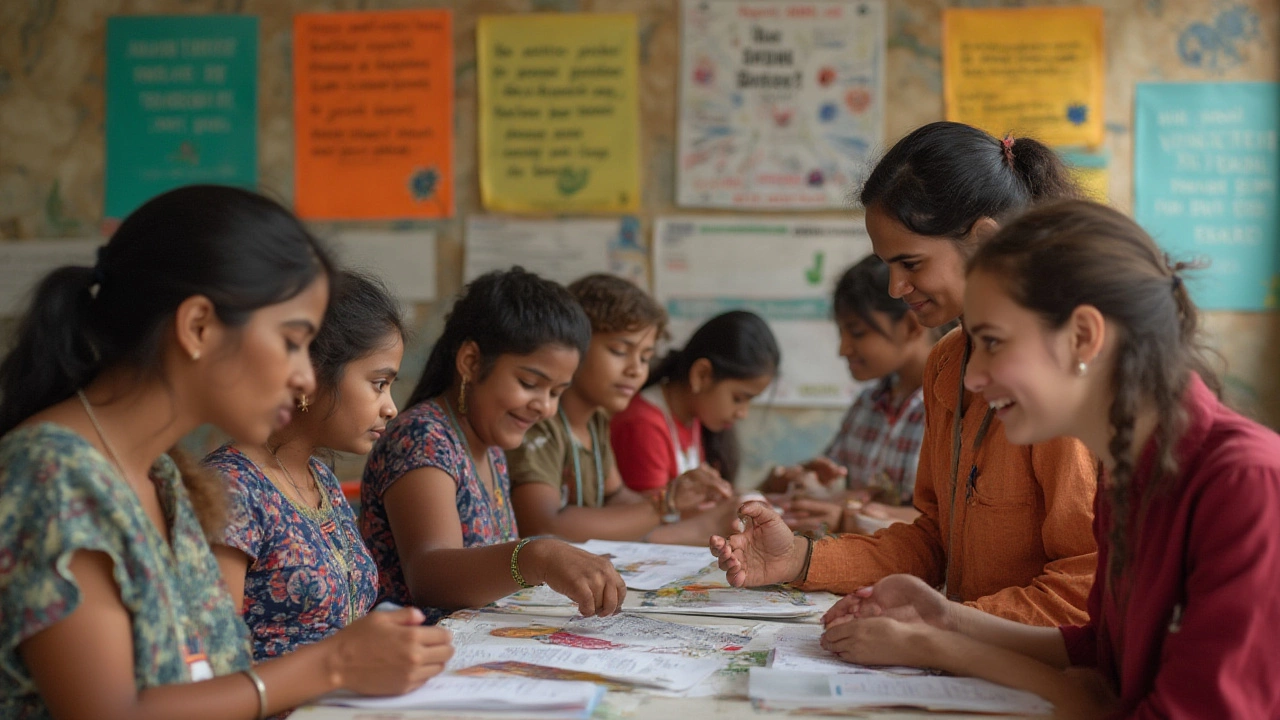Imagine an hour that can change how others see you. It’s not magic—it’s volunteering. There's this question hiding in plain sight: how many hours of volunteering make you stand out, but not look like a try-hard? Companies, college admissions folks, even your next-door neighbor, they all love volunteers. Yet, nobody posts a perfect number over the door. People worry: "Is five hours enough? Should I clock up a hundred? Will anyone even care?" Let’s untangle the stress with some real talk, numbers, and lessons straight from people who track this stuff for a living.
What’s Considered a ‘Good’ Amount of Volunteering?
Here’s the simple truth: there isn’t a global scoreboard for volunteering. A "good" amount isn’t stamped on a sticker. How about context? A 2023 LinkedIn study found that listing volunteer experience boosted job application callbacks by 27%—but nobody was counting hours, just authenticity. Still, for colleges, scholarships, or competitive programs, numbers do sneak in.
Most US high schools suggest at least 50 hours before graduation; that's about an hour a week during the school year. National Honor Society recommends 40 hours. For serious college hopefuls—think Ivy League—you’ll often see applicants with 100-200 hours over all four years. That’s the ballpark for “impressive.” For adults, nonprofits float between 20-50 hours per year as “actively involved.” For organizations like Habitat for Humanity or Meals on Wheels, regular volunteers log 2-4 hours a month; some power-volunteers do way more. But here’s the kicker: nonprofits value consistency more than cramming. Show up reliably and you’ll score more points than padding a one-off marathon.
Trust me, you don’t need to rival Mother Teresa to make an impression. One Girl Scouts study found that girls who averaged just one hour a week over a year built stronger leadership skills than those who didn’t volunteer at all. Even a single, well-chosen project—running a food drive, organizing a community cleanup—can punch way above its “hours” weight if you show initiative, stick it through, and learn from it.
In summary: for teens, aim for 50–100 hours through high school. Adults? 20–50 hours a year looks actively engaged. But don’t lose sleep if you fall short or go over. Quality always trumps quantity, and those hours only count if they’re honest.
Why the Number of Hours Isn’t Everything
It feels good to see your hours add up, but nobody wants a volunteer who’s only chasing a quota. Organizations see through it fast. Schools, employers, and nonprofits talk a big game about hours, but what they want is the story behind them. Did you start a reading club at a shelter? Did you stick around for months at an animal rescue and help out after everyone else left? That’s gold.
Honesty matters more than hitting a round number. Padding your resume with three weekends at five different soup kitchens can look a little desperate. Instead, if you spent thirty hours tutoring the same kid week after week, that commitment shows ten times more heart. Recruiters look for dedication, not just mileage.
Let’s talk about impact. One United Way report in 2024 showed that regular volunteers made almost double the impact compared to “event-only” helpers—even when they volunteered fewer hours. This means rolling up your sleeves for one cause, sticking with it, and building relationships counts for more. Plus, you pick up skills and references you just don’t get from short, scattered shifts.
In interviews, people love to share stories—how they pushed through setbacks, learned new things, or really changed someone’s life. That’s what stands out on applications and in heart-to-hearts with your boss, coach, or admissions officer. Your hours don’t have to be picture-perfect; your experience just needs to be real.

Real-World Stats: Volunteering in 2025
Let’s get nerdy for a second—because the numbers don’t lie. According to the most recent Bureau of Labor Statistics data (as of February 2025), about 23% of Americans volunteered at least once last year. Average annual hours were just under 52 for those active volunteers—that’s basically one hour per week.
Check out this handy table that shows the breakdown for different age groups in the US:
| Age Group | Percent Volunteering | Average Annual Hours |
|---|---|---|
| 15-24 | 19% | 37 |
| 25-44 | 22% | 48 |
| 45-64 | 25% | 60 |
| 65+ | 26% | 84 |
Notice how volunteer hours climb as people get older. A lot of younger folks squeeze volunteering in between classes, sports, and part-time jobs—so there’s no shame in smaller numbers. Meanwhile, retirees pour more time in. What’s consistent? That “good” range (about 40–100 hours yearly) keeps popping up through organizations’ reports and surveys.
Don’t forget, pandemic years saw a dip, but remote volunteering opened new doors. In 2024, about 15% of Americans logged virtual volunteer hours—from crisis hotlines to online tutoring. No one’s judging if your hours show up from your laptop rather than on the ground—impact is impact.
Tips for Making Your Volunteer Hours Really Count
Instead of worrying about hitting a magic number, think about ways to make whatever time you have matter more. Here’s what stands out to schools, employers, and, most importantly, the people you’re helping:
- Stick with one or two causes. Depth wins over breadth every time. Building relationships means more than a punch-card mentality.
- Document your work. Keep a simple log or journal (there are free apps for this) where you jot down what you did, what you learned, and how it felt.
- Look for ways to lead. Start a project, help organize others, or suggest improvements. Even small leadership moments (like running a craft table or organizing a group photo) stand out.
- Pick up real skills. Are you learning Spanish while working at a bilingual clinic? Getting first aid certified with the Red Cross? Skills count double!
- Follow up with your supervisor. Ask for a short letter of reference—they’ll remember you better if you’re consistent.
If you’re still not sure where to start or how many hours you can realistically give, set a goal for at least 40 hours this year and see how it fits. If you blow past it, awesome. If you fall short but find new friends or learn something big, call it a win.

Standing Out with Your Volunteer Story
There’s a big difference between a number on a form and a story you’re proud to tell. When you’re ready to brag (quietly, of course) on your college essay or job interview, don’t just write “volunteered 100 hours at local shelter.” Instead, bring it to life—explain what you did, what changed, and maybe a challenge you faced.
Sound awkward? Try this template: “Over 60 hours, mentored elementary school kids in reading and ran a fundraiser for books. Learned how tough it is to keep kids motivated, but got them excited by tying books to their hobbies.”
Sometimes a short stint is worth more than a long haul—if it meant taking initiative, solving a problem nobody else wanted to touch, or lifting someone up. Did you stay an extra hour to calm down a scared dog at the shelter? Did you teach your neighbor how to sign up for public benefits? These moments become the stories people remember.
Most importantly, let your personality shine through. People get hired or accepted because they seem genuine, hard-working, and empathetic—not just because of a high score next to the word “volunteering.”
If you care about the cause, show up when you say you will, and put in real effort, you’re already ahead of the pack. Volunteer hours are just one part of the story. Make them meaningful and watch how doors start to open.





